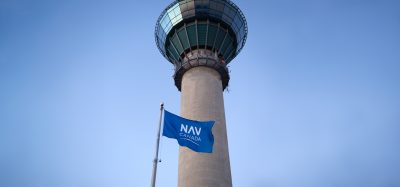SESAR: Futureproofing airports
- Like
- Digg
- Del
- Tumblr
- VKontakte
- Buffer
- Love This
- Odnoklassniki
- Meneame
- Blogger
- Amazon
- Yahoo Mail
- Gmail
- AOL
- Newsvine
- HackerNews
- Evernote
- MySpace
- Mail.ru
- Viadeo
- Line
- Comments
- Yummly
- SMS
- Viber
- Telegram
- Subscribe
- Skype
- Facebook Messenger
- Kakao
- LiveJournal
- Yammer
- Edgar
- Fintel
- Mix
- Instapaper
- Copy Link
Posted: 7 August 2014 | Florian Guillermet, Executive Director, SESAR Joint Undertaking | No comments yet
The SESAR Programme is helping to change the face of ATM in Europe. Florian Guillermet, Executive Director of the SESAR Joint Undertaking, provides an update of the progress.
Travel starts and ends with airports and they are therefore essential components in the Air Traffic Management (ATM) system. And yet, up until recently, airports have been disconnected from the rest of the network, with very little real-time information exchange on flight arrivals and departures. This lack of interconnectedness means that information on flight arrivals and departures is often inaccurate, leading to flight delays and holdings, which ultimately results in increased fuel burn, emissions and cost. As traffic continues to increase in Europe, this problem is only likely to escalate. The SESAR (Single European Sky ATM Research) vision is to see airports become fully integrated into the network in order to increase the efficiency and overall performance of Europe’s ATM. Over the course of the last six years, SESAR is making that vision a reality.
Integrating airports into the ATM network
At SESAR, we recognised right from the start that airports needed to become fully involved in our research and development to make the change happen in ATM. Today, 30 per cent of SESAR resources – €475 million – are dedicated to developing technological and operational solutions tailor-made to airports’ business needs and their ATM environment. Within the framework of the European ATM Master Plan, the SESAR Programme focuses on several areas of operations: from airport safety nets, runway and surface management, to integrated arrival and departure management, advanced tower controller working position and remote tower, and of course airport operations management. All of this work is undertaken with a net-centric vision, recognising that airports need to be wholly integrated in order to bring substantial and measurable performance improvements to the ATM system.
Airports themselves are very well aware of how critical it is to connect their operations with the network to enhance their planning and develop timely contingency options in cases of disruptions. With SESAR, airports have the tools they need to identify and resolve problems in a proactive way. A key component in this net-centric vision of airports is SESAR’s Airport Operations Plan (AOP) concept, which is a single, common and collaboratively-agreed rolling plan available to all stakeholders. Airspace users, airport operators, air navigation service providers, ground handling and de-icing agencies, provide information about their operations in order to have shared knowledge of the current situation and detect when plans need to be adjusted. The AOP is created in the strategic planning phase, when the intentions of the airspace users are known (i.e. seasonal schedules). In the tactical phase (i.e. from 24 hours before start of operations), the AOP is managed and monitored by the Airport Operations Centre (APOC). Relevant data from the AOP, and the AOPs from other airports, are shared with the Network Operating Plan (NOP) via System Wide Information Management (SWIM).
Now boarding: SESAR solutions
While smaller airports need solutions to handle their limited traffic in a cost effective way, larger airports are faced with increased air traffic, leading to increased ground operations and surface traffic moving across runways, taxiways and aprons. In response to this, the SESAR Programme is developing surface movement planning and routing tools so that airports might make better use of infrastructure such as taxiways and runways. One such operational improvement consists of Advanced Surface Movement Guidance Control System (A-SMGCS) functions based on improved procedures and technical specifications for planning, assigning and modifying routes for aircraft and service vehicles operating at the airport. This approach enables planned and cleared routes to be generated automatically by ground systems and uploaded to the aircraft and vehicles via data link. Alerts to air traffic controllers, pilots and vehicle drivers can be triggered, should an infringement or risk of runway incursion be detected. Although more activities are needed to fine tune these functionalities, validations undertaken at Paris Charles de Gaulle, Milan and Madrid Airports suggest that A-SMGCS has a bright future in airport operations.
Increased traffic also means airports looking at how to increase landing rates. This is where SESAR solutions such as ‘time-based separation (TBS)’ could come in. Today, airplanes making their final approach to land are obliged to maintain set separation minima. These distances are fixed, regardless of the weather conditions. When keeping to these distances in strong headwinds, longer gaps of time develop between airplanes. This means fewer flights landing per hour, delays and longer approaches to airports, increased holding at busy times and greater fuel burn. TBS replaces distance separations with time intervals, in order to adapt to weather conditions. SESAR validations at London Heathrow Airport demonstrated that TBS could allow up to five extra aircraft per hour in strong wind conditions, and reduce holding times up to 10 minutes. Thanks to TBS, we foresee enhanced safety, fewer delays and improved environmental performance.
These are just some of the many solutions that are emerging from SESAR’s portfolio of airport projects, but they give a taste of the transformation that can be brought about by the Programme’s R&D efforts.
Partnerships for change
In addition to the cooperation developed through SEAC, the SESAR Programme also leverages airport expertise through ACI Europe, which represents over 450 airports in 44 European countries handling 90 per cent of Europe’s commercial air traffic. Since 2010, ACI Europe and SESAR have been working side-by-side to integrate small- to medium-sized airports into the SESAR Programme and to design operational and technological solutions which take into account airports’ local environment. Through a series of ‘SESAR Roadshows’, ACI Europe and the SJU have sought to raise awareness about SESAR’s work on airports among airport senior management. The roadshows are motivating top decision makers, who despite having a long list of immediate issues to solve, to consider the long-term challenges that a research and innovation programme like SESAR can help resolve. Of course, with its international outreach, ACI Europe is also playing an important role to ensure SESAR uptake in a global context, through for example the Global Air Navigation Plan (GANP) by the International Civil Aviation Organization (ICAO) – a consensus-driven global ATM modernisation strategy.
SESAR 2020 and towards deployment
These are promising yet challenging times for Europe’s airports and the ATM system. A lot has been achieved by SESAR, but a lot more work needs to be done to unlock the full potential of Europe’s ATM. An extended Programme (SESAR 2020) will focus on key components of the ATM exploratory research, industrial research, very large-scale demonstrations and a strong coordination with the future Deployment Manager. Airports will remain a top priority for the Programme with a view to ensuring that the SESAR vision of integrated and efficient airport operations is fully achieved.
SESAR: The story so far
The SESAR Research and Innovation (R&I) Programme is the technological pillar of the Single European Sky, which aims to modernise the European ATM system – recognised as key component in the aviation value chain. It does so by pooling together the knowledge and resources of the entire ATM community, through a public-private partnership: the SESAR Joint Undertaking. With a budget of €2.1 billion (until 2016), SESAR is researching and developing innovative ATM solutions to ensure a sustainable future for the aviation industry in Europe.
In a relatively short space of time, SESAR members have succeeded in clearly defining a comprehensive ATM research programme and building a robust and effective sector-wide partnership. Guided by the European ATM Master Plan (the R&D and deployment roadmap for delivering ATM modernisation), SESAR is implemented by 3,000 experts working to deliver a solid stream of technological and operational solutions. In order to establish their readiness for industrialisation and subsequent deployment, these solutions undergo pre-industrial validation within a given timeframe in local and regional-based environments. Some of these solutions are now shared through the SESAR website, with the necessary operational and technical information (the ‘solution packs’), which we are confident will accelerate their early deployment.
Biography
Florian Guillermet graduated as an Engineer from Ecole Polytechnique and the Civil Aviation Engineering School in France. He also holds a Master’s degree in Aeronautics and Airport Management. He has been working in the field of Civil Aviation for 15 years. He started his career in the flight planning department of Air France. He then held different managerial positions at the French Air Navigation Service Provider before joining the European Central Flow Management Unit at EUROCONTROL. His experience ranges from ATM systems definition and implementation to network operations management. Florian joined the SESAR Joint Undertaking in June 2008 as Chief Programme Officer to manage the SESAR Programme and became Deputy Executive Director Operations and Programme in 2012. Since April 2014 he has been leading the SESAR Joint Undertaking as Executive Director.
















